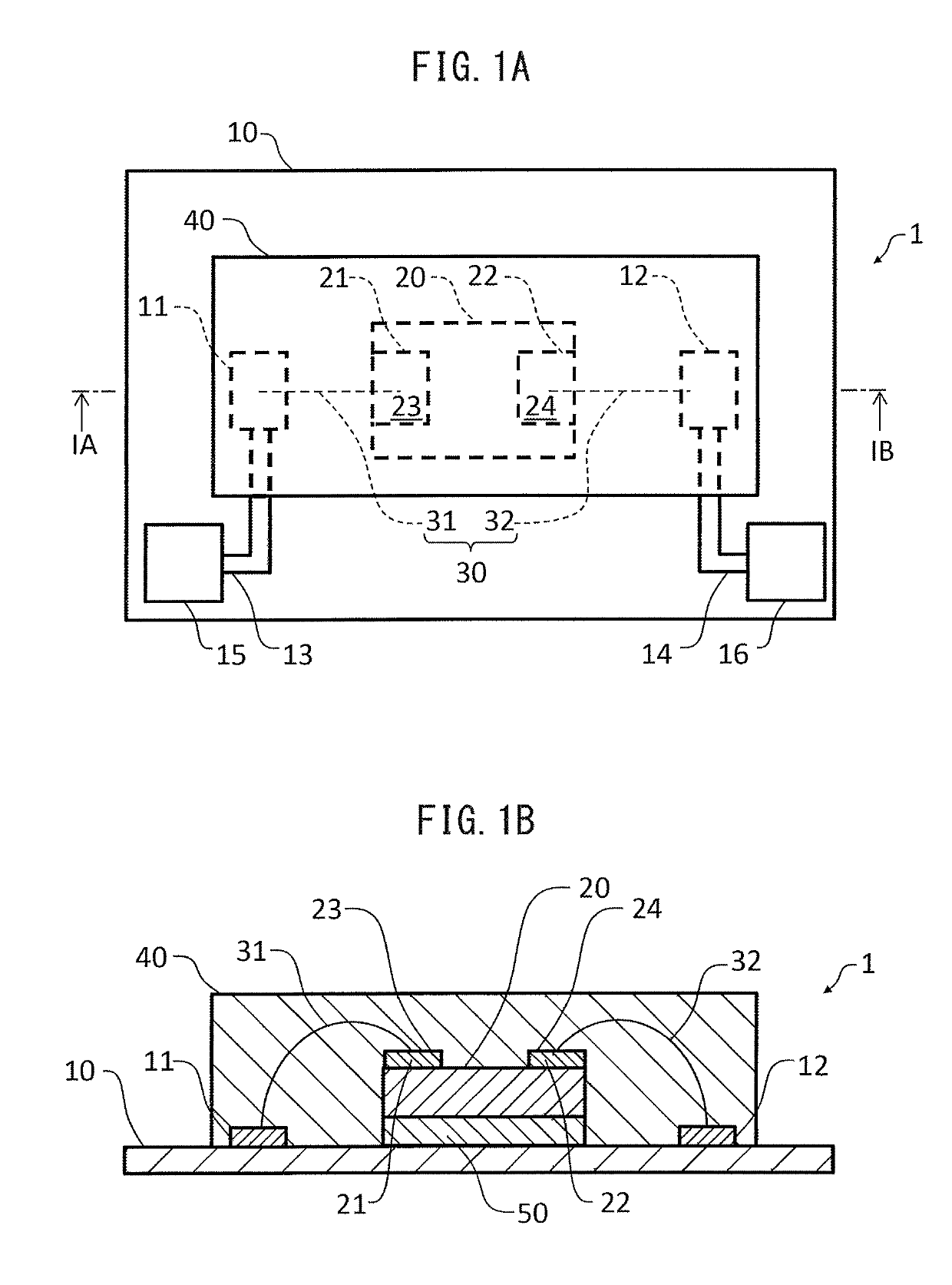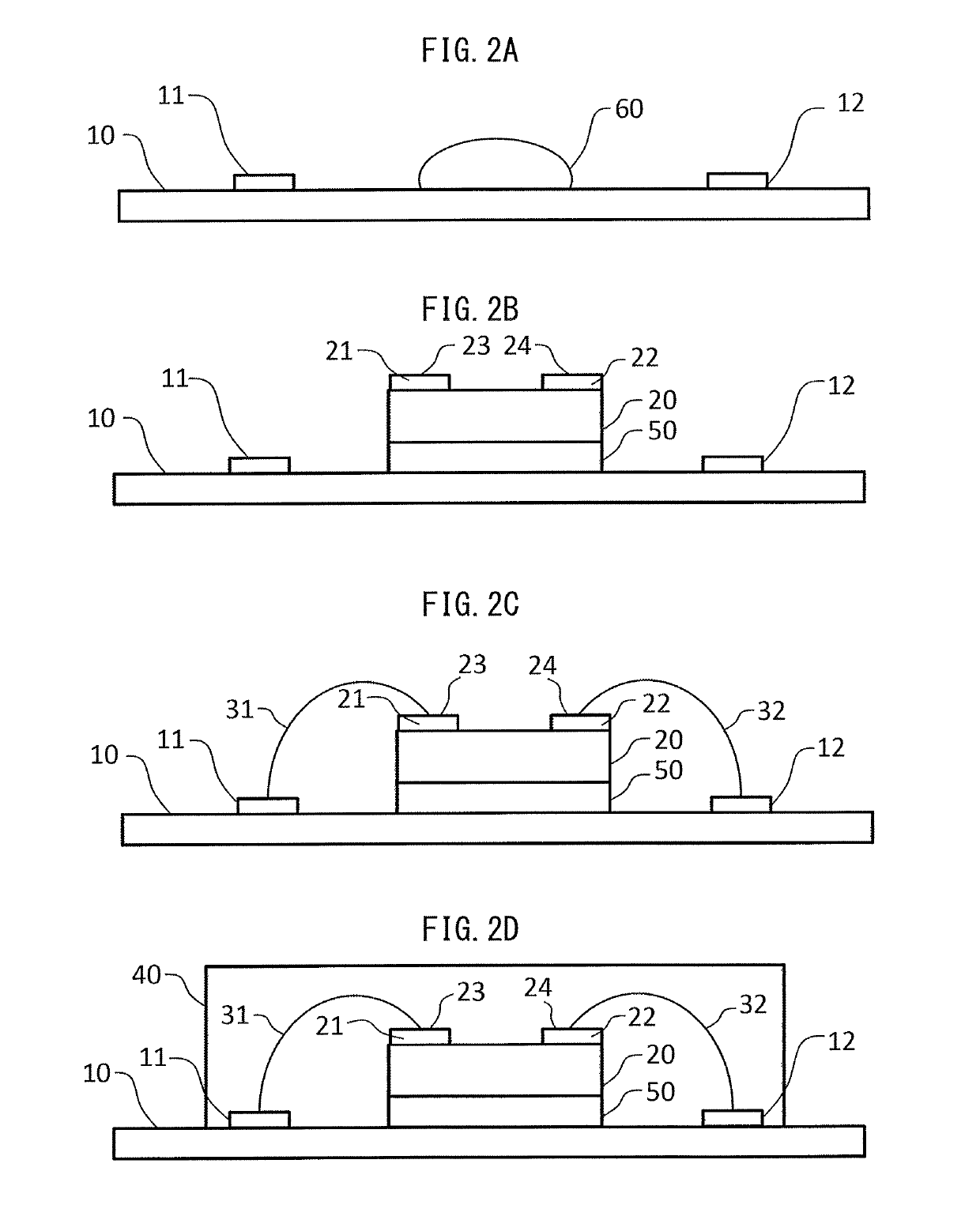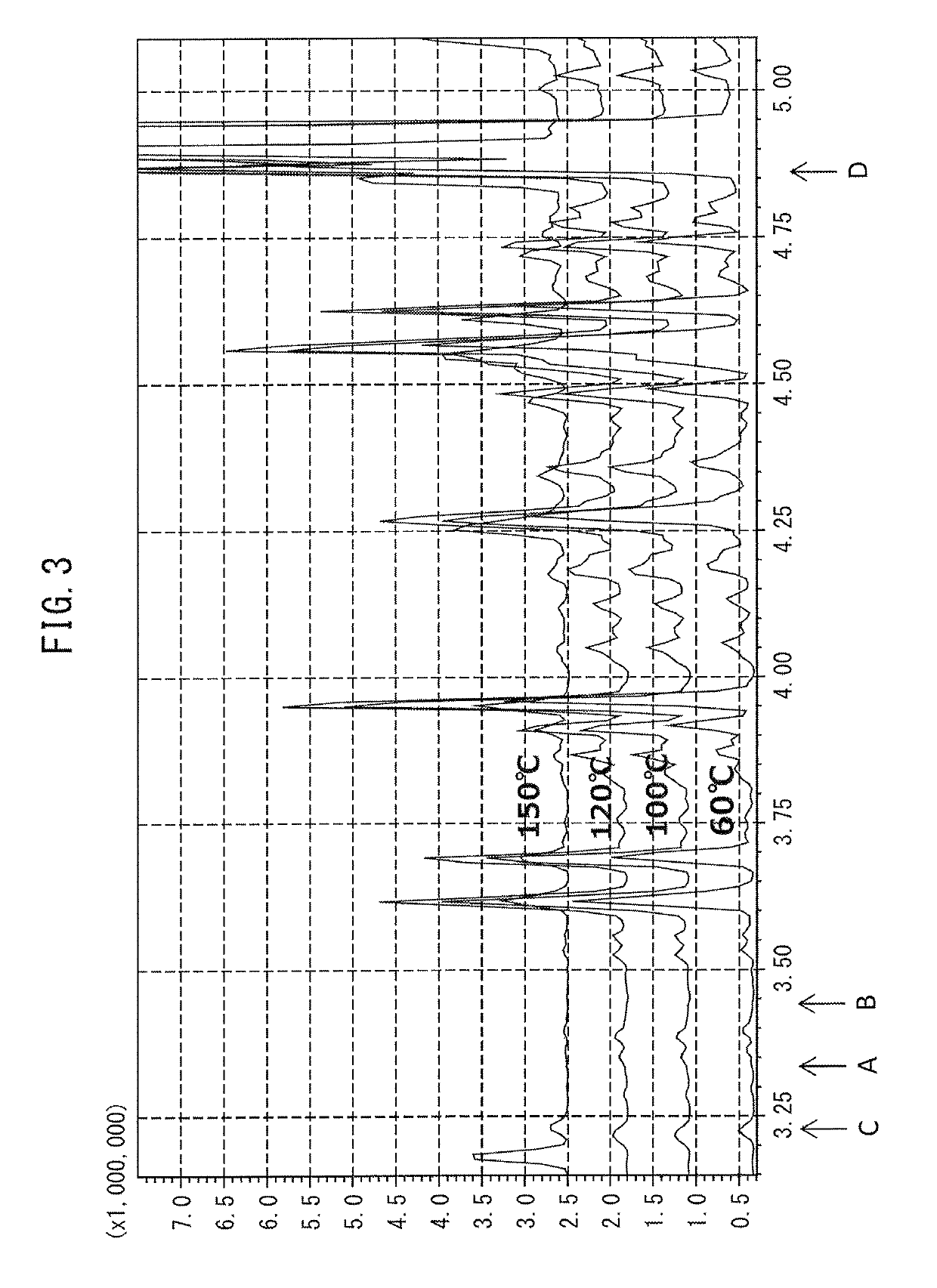Condensation reaction-type die bonding agent, LED light emitting device and method for manufacturing same
a technology of reaction-type die bonding agent and die-bonding electrode, which is applied in the direction of solid-state devices, non-macromolecular adhesive additives, semiconductor devices, etc., can solve the problems of poor electrical connection between the connected device electrode and the substrate electrode, and achieve poor electrical connection of the electrode. , the effect of little liability
- Summary
- Abstract
- Description
- Claims
- Application Information
AI Technical Summary
Benefits of technology
Problems solved by technology
Method used
Image
Examples
manufacturing example 1
[0099]A reaction apparatus provided with a stirrer, cooling tube, thermometer, and nitrogen introduction tube was charged with methyltrimethoxysilane 136.2 parts and water 10.8 parts, then the reaction system was raised in temperature to 40° C. Next, formic acid 0.14 part was charged and the hydrolysis reaction started. After the start of the reaction, due to the reaction heat, the temperature of the reaction system reached 62° C., but after that the temperature fell to 40° C., so the system was held at that temperature for 30 minutes. After that, the byproduct methanol was removed to the outside of the system while the reaction system was raised in temperature to 120° C. over 3 hours. Next, the system was subjected to a condensation reaction at the same temperature for 1 hour to thereby obtain a liquid state polysilsesquioxane (B-1) having trisiloxy units shown by CH3SiO3 / 2 (x=1, y=0). The viscosity of the (B-1) component was 20 mPa·s / 25° C., while the weight average molecular weig...
manufacturing example 2
[0100]Except for making the amount of water charged 16.2 parts in Manufacturing Example 1, the same procedure was followed to obtain a liquid state polysilsesquioxane (B-2) having trisiloxy units expressed by CH3SiO3 / 2 (x=1, y=0). The viscosity of the (B-2) component was 350 mPa·s / 25° C., the weight average molecular weight was 2500, and the content of residual methoxy groups was about 24 wt %. No peak of residual hydroxyl groups could be found.
manufacturing example 3
[0101]Except for making the methyltrimethoxysilane 136.2 parts, the dimethyldimethoxysilane 51.5 parts, and the water 27.8 parts in Manufacturing Example 1, the same procedure was followed to obtain polysilsesquioxane (B-3) having (CH3)1.3SiO1.35 as average siloxy units (x′=0.7, y′=0.3, b=2). The viscosity of the (B-3) component was 1,600 mPa·s / 25° C., the weight average molecular weight was 7000, and the content of residual methoxy groups was about 19 wt %. No peak of residual hydroxyl groups could be found.
[0102]Manufacture of Condensation Reaction-Type Die Bonding Agent
PUM
| Property | Measurement | Unit |
|---|---|---|
| softening point | aaaaa | aaaaa |
| temperature | aaaaa | aaaaa |
| molar ratio | aaaaa | aaaaa |
Abstract
Description
Claims
Application Information
 Login to View More
Login to View More - R&D
- Intellectual Property
- Life Sciences
- Materials
- Tech Scout
- Unparalleled Data Quality
- Higher Quality Content
- 60% Fewer Hallucinations
Browse by: Latest US Patents, China's latest patents, Technical Efficacy Thesaurus, Application Domain, Technology Topic, Popular Technical Reports.
© 2025 PatSnap. All rights reserved.Legal|Privacy policy|Modern Slavery Act Transparency Statement|Sitemap|About US| Contact US: help@patsnap.com



